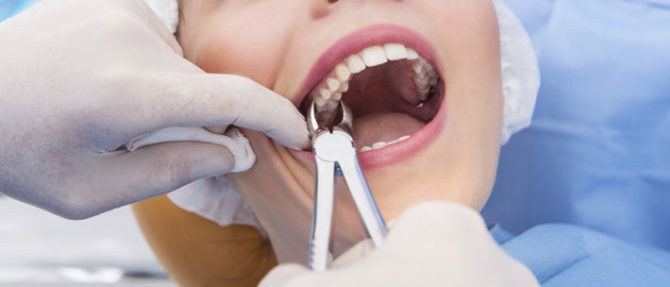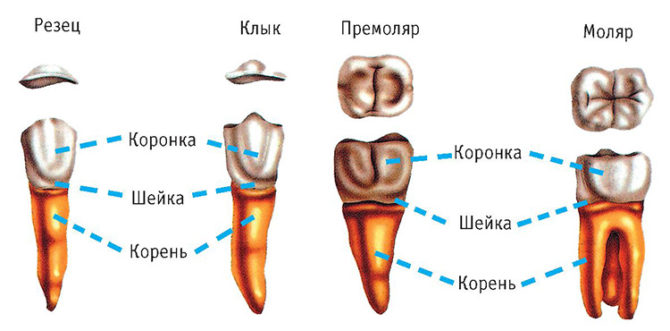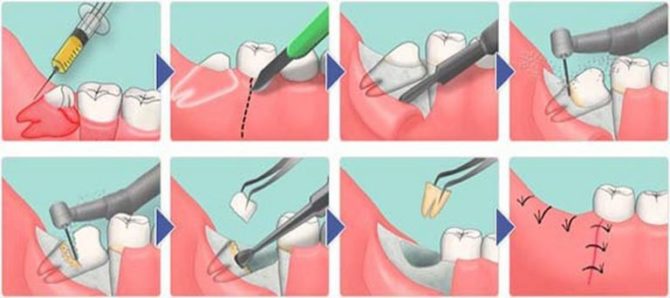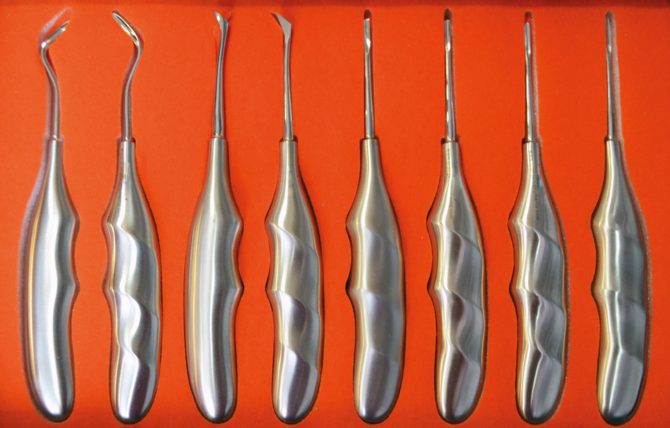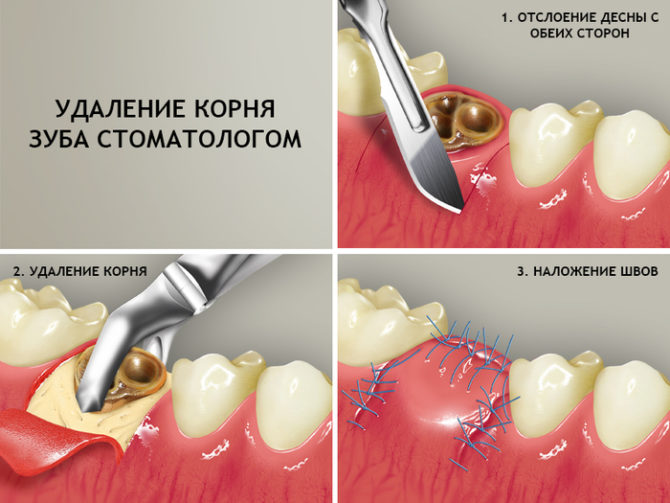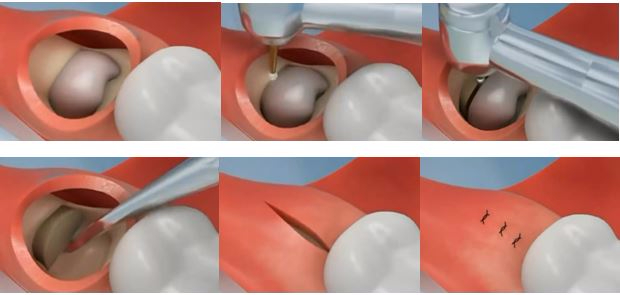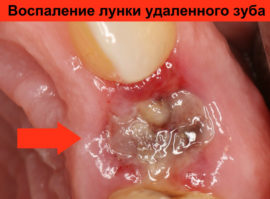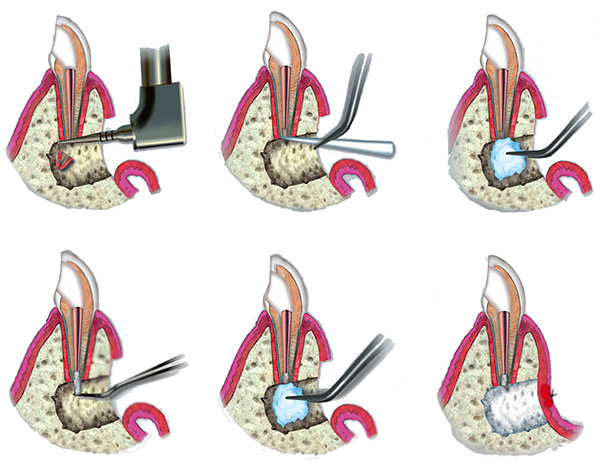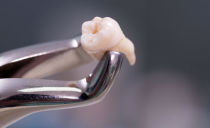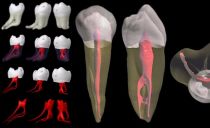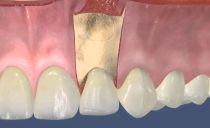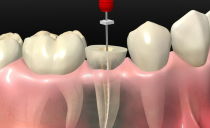Removing the root of a decayed or decayed tooth: does it hurt, the removal process
In the past century, the question of whether it is painful to remove the root of the tooth if the crown is completely destroyed, many dentists would give an affirmative answer. Pain during and after the procedure, complications from anesthesia, and discomfort have plagued many patients. But today the situation has changed - a diseased tooth and its root can be pulled out absolutely painlessly.
Content
Who will have to part with a tooth
After tooth extraction in the doctor’s office, complications are extremely rare. More often, the sad consequences occur when it spontaneously falls out due to destruction or injury. In such cases, there are two ways: restoration of dentin and enamel or removal of the tooth root.
To remove the root of the tooth will have the following symptoms:
- persistent discomfort in the gums;
- sharp pain when chewing;
- swollen soft tissues;
- bleeding;
- the appearance of pus.
A sure sign of the inflammatory process in the gums is an increase in body temperature in the absence of symptoms of another disease.
Important! You cannot postpone a visit to dentistry, even if only one of these symptoms appears. Any suspicion that the root of the tooth remained in the gum and began to rot should become the reason for urgent medical attention.
What are the roots of teeth, look at the photo:
Temporary contraindications
Surgical removal of the root of the destroyed tooth is contraindicated in the period:
- relapse of a complex mental disorder;
- acute phase of acute respiratory viral infections;
- exacerbations of a neurological disease;
- rehabilitation after a heart attack.
Dental clinic doctors are aware of all contraindications to extraction. But not all conditions have vivid clinical signs, therefore, in order to avoid unpleasant consequences, it is necessary to warn the doctor about malaise.
Generalized tooth extraction scheme
The process of removing any tooth includes the following steps:
- Examination and medical history (allergic status, information about the state of health and dentition).
- Preparation of the surgical field: treatment of the injection site, rinsing the mouth with an antiseptic.
- Anesthesia.
- Exfoliation of the gums from the tooth with a trowel.
- Loosening the tooth with forceps.
- Extraction of a tooth from a hole.
- Antiseptic treatment of the well.
- Stop bleeding with tamponade.
According to this scheme, a simple removal is carried out. In some situations, for example, when pulling out a wisdom tooth or a badly damaged molar, complex extraction is required. Its main difference is that in addition to the forceps, the dentist uses a drill to saw bone or saw the root into pieces, a chisel, a hammer and other dental instruments.
Getting rid of a wisdom tooth is especially difficult. Due to the presence in the posterior quadrant of the jaw, access to it is complicated. With an anatomically incorrect location or curved roots, which are often found in third molars, the dentist is forced to make incisions in the gums, pull out the root in parts, and then suture.
How is a tooth decayed?
The tooth extraction process is a simple dental operation.Difficulty increases when you need to remove a tooth root that is completely destroyed. Factors requiring the intervention of an experienced professional:
- small size of the remaining crown;
- condition of surrounding tissues;
- the location of the remaining hard tooth tissues under the upper edge of the gums;
- defects of gums, roots.
Affects the complexity of the operation and the position of the upper or lower jaw. On the upper jaw, the walls of the holes are longer and thicker, respectively, the teeth are removed from them with great difficulty - to perform the manipulation you need a high qualification of the dentist.
Wisdom teeth, from which only the root remains, are removed in the same way as ordinary molars, but in some patients the healing after such an intervention is very painful.
Inspection and preparation
The procedure begins with a thorough examination and preparation of the patient. At his first visit to the clinic, the doctor will take an x-ray and examine the oral cavity.
The tasks of the doctor:
- determine the condition of the tooth, assess the scale of destruction;
- clarify the presence of allergies, contraindications, inflammation;
- choose a method of pain relief;
- make an operation plan;
- prepare the tools.
As tools for removing a rotten tooth root, use a drill, tongs, a set of elevators (photo).
A prerequisite is the hygienic treatment of adjacent tissues. Tearing is possible only after removing stones and plaque from surrounding molars, incisors or canines. Immediately prior to extraction, the oral cavity is treated with a chlorhexidine solution.
Anesthesia
There are times when dentin is destroyed gradually, without inflammation, without the appearance of rot. In such situations, painless root removal is possible without the use of painkillers, however, more often it is necessary to use anesthesia.
The choice of drug is carried out taking into account:
- age
- allergic status;
- the presence of somatic diseases;
- individual intolerance to drugs;
- the presence of chronic diseases: epilepsy, diabetes;
- the complexity of the upcoming operation.
The patient should notify the dentist of all abnormalities before the procedure. In most cases, the root of the tooth is removed with local anesthesia - one or two injections for incisors, from 2 to 4 injections in the gums for molars. But if two teeth have collapsed, or the jaw will be opened, the patient receives general anesthesia - he will sleep until the doctor finishes pulling out the tooth.
Features of anesthesia of a tooth with a rotten root
Anesthetic injection is done at the projection site of the tooth roots. But if the medicine is introduced into the area of the rotten area, it may not work, and the person will be hurt during the extraction process.
Treatment of patients with rotten roots is carried out in two stages. On the first visit, the dentist anesthetizes the gum, dissects it and cleanses from pus. During the second visit, anesthesia is repeated, and the doctor removes the root that has rotted inside the gums.
Delete
How to remove a tooth, if only the root remains, the doctor decides. Usually begin with the use of forceps. Even if the destroyed roots remain under the gum, the holes do not completely overgrow - the dentist can gently pick up the remnants of hard tissues and easily tear them out.
If the tooth has crumbled to the very base, it is pulled out by the elevator. Having introduced the instrument between the gum and dentin, the doctor presses on the handle and performs rotational movements of small amplitude. As a result, periodontal fibers are shifted, and the root is squeezed out of the hole.
A drill is used when hard tissues of the molar must be crushed before removal. With the right anesthesia performed, this procedure is painless, discomfort is possible only when the gum is already healing.
Removal of inflammation
When removing a rotten root, an inflammatory process is often found.To wound safely overgrown and not fester, it is customary to do an antiseptic treatment. But one treatment will not provide proper prevention, therefore, an anti-inflammatory drug is laid in a fresh hole. With it, the hole will heal faster, and the patient will be less likely to get alveolitis.
Stitching
To extract the root system, the doctor separates and raises the flaps of soft tissues, you can attach them back only by suturing. It is customary to tighten the edges of the holes with double or triple removal, when a significant part of the gum has been dissected. This is done so that the affected area is overgrown faster and does not cause discomfort to the patient.
If there are fragments of root in the hole
If the contraction of the edges of the wound was performed with catgut, treatment of the patient can be considered completed. If non-absorbable material was used, the patient will have to return to dentistry to remove the stitches after a week. During this time, it is necessary to track the condition of the gums, your own feelings and inform the doctor if:
This means that small fragments of tooth tissue that could go unnoticed during extraction rot in the hole. The doctor should prescribe a repeat x-ray to the patient, check the quality of the operation and find out the cause of the ailment. Inaction is fraught with the development of alveolitis (inflammation of the hole), osteomyelitis, phlegmon and other serious diseases.
How is the removal of the rotten root of the tooth with the conservation of the crown
A tooth in which only the root remains is not always pulled out whole. For instance, if an inflammatory process develops at the apex of the root, but the tooth itself can still be saved, a resection of the apex of the root is carried out - partial removal.
The procedure is carried out after filling the canals, under local anesthesia. The operation is simple and lasts no more than half an hour. Its main stages:
- History taking.
- Preparation of the surgical field.
- Anesthesia.
- Gum cutting for access to the root.
- Exfoliation of soft tissues.
- Sawing a “window” in the bone.
- Cutting off the inflamed root with a granuloma or cyst.
- Insertion of drugs stimulating bone growth into the cavity.
- Suturing.
What to do after removal
After any surgery, all the recommendations of the dentist should be followed, as well as:
- do not eat within 2 hours after manipulation;
- cool the soft tissues of the face in the projection of the removed root;
- quit smoking for two days;
- take prescribed pain medication;
- make antiseptic applications;
- monitor if other teeth are crumbling.
Sometimes after complex extraction, dentists prescribe antibiotics to patients. It is impossible to ignore this appointment - after a tooth is pulled out of the hole, a focus of infection forms in it, which can be repaid only with the help of drugs.
The following video schematically shows different methods for removing incisors, fangs, molars and premolars of the lower and upper jaw.

